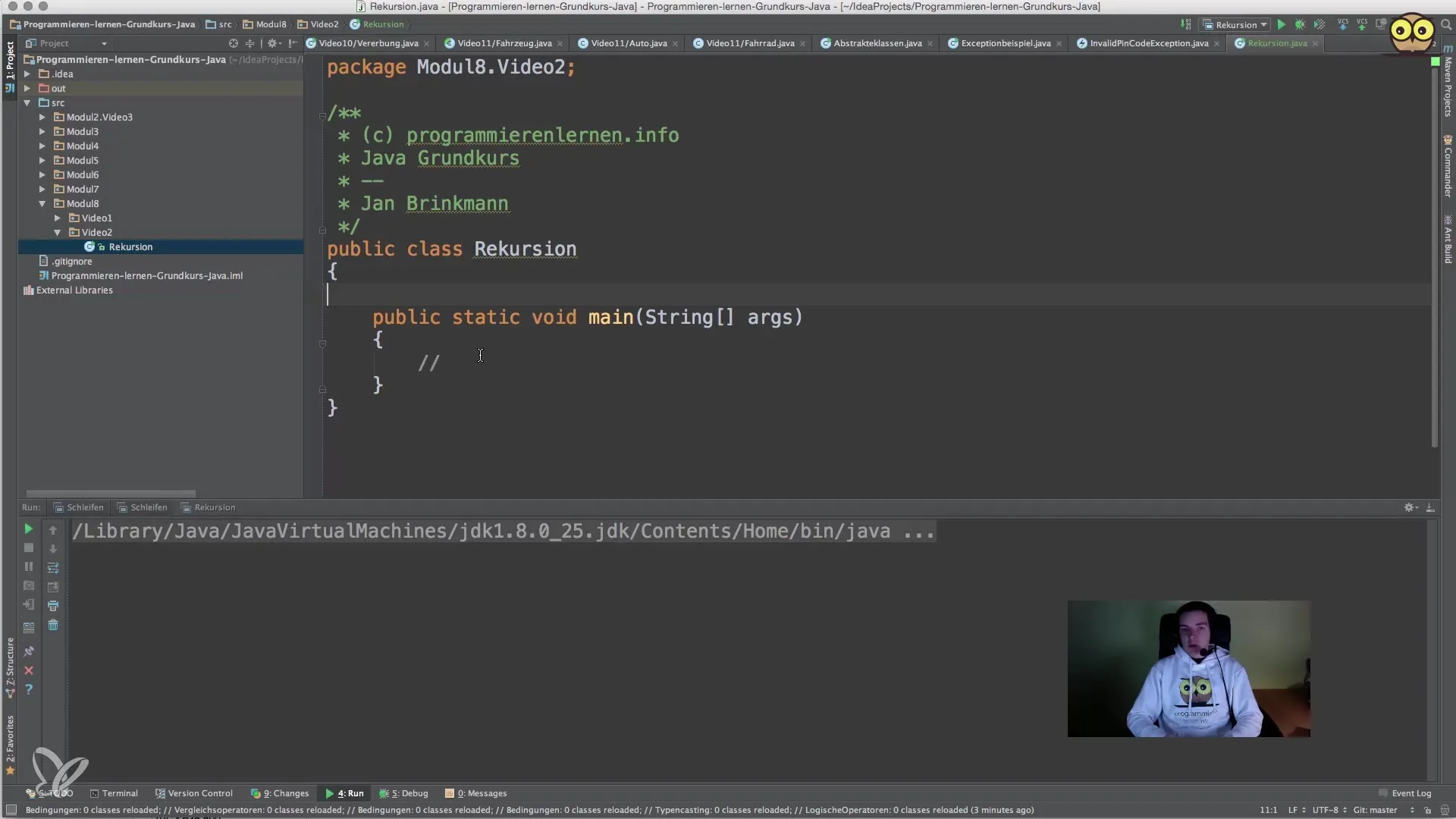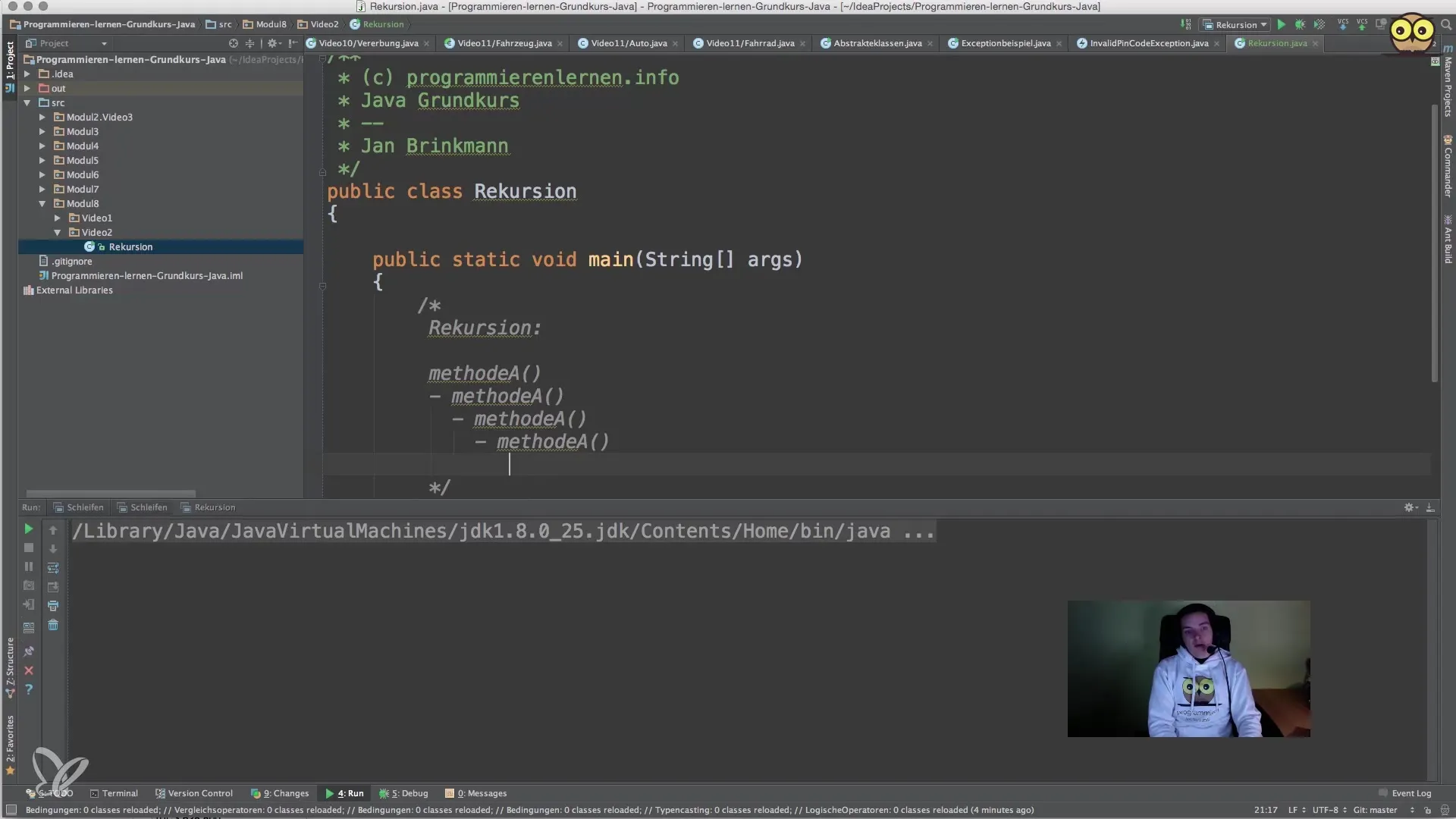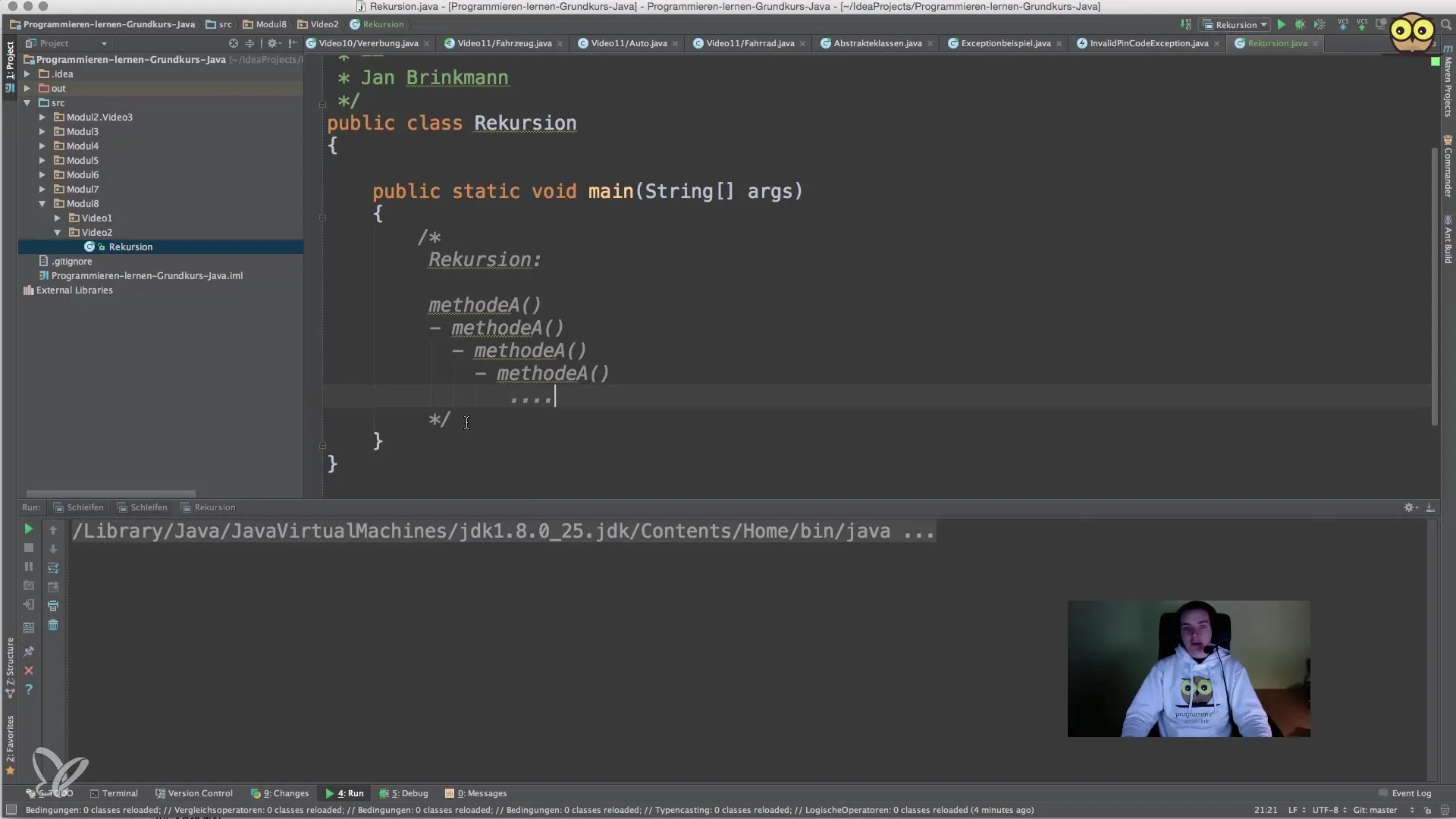Recursion is a fundamental concept in computer science and plays a crucial role in tackling complex problems. If you have ever dealt with tasks where a problem refers back to the same principle, you have surely heard of recursion. Whether in mathematical calculations or the structure of data, the possibilities are diverse. In this guide, we will specifically discuss the creation of a recursive method in Java to calculate the factorial of a number. Let's understand step by step how you can effectively use recursion.
Key Insights
- Recursion is a self-referential call
- Every recursive method requires a base case
- In factorial calculation, the problem is broken down into smaller subproblems
Step-by-step Guide to Implementing Factorial Calculation
To create a recursive method, we start with the basics. The factorial of a number n (n!) is the product of all positive integers up to n. For example, the factorial of 3 (3!) equals 1 × 2 × 3 = 6.
1. Define the Method
First, we need to define the method that calculates the factorial. We will use the return type long to handle larger numbers efficiently.

The method is declared static, as we want to call it from the main method.
In this line, you have already laid out the template for your method.
2. Base Case
A crucial element of a recursive method is the base case. This must ensure that recursion does not continue indefinitely. In factorial calculation, the base case is that we calculate the factorial of 0 or 1, both of which yield the value 1.

This line informs the method that it can complete the calculation immediately at 0 or 1.
3. Recursive Call
Now comes the main part of our method – the recursive call. Here we call our method within the method itself, but with a reduced value.
This means we multiply the current number by the factorial of the number reduced by one.
4. Complete Code
Now we put all the parts together and see how our method looks.

5. Calling the Method
We will now call our method in the main method to test if everything works.
6. Testing and Verifying Results
If you run the program now, it should output factorial of 3 is: 6.
It is important to check the result to ensure that everything is functioning correctly.
7. Using a Debugger
I recommend using a debugger to better understand the process of recursion. Step-by-step execution will show you how values are passed through multiple calls.
You can observe how the method is recursively called, which helps you comprehend the underlying logic of recursion.
Conclusion – Recursion in Java – Efficient Methods with Self-Calls
The use of recursion can be challenging at first, but it provides an effective way to solve complex problems. In this guide, you learned how to implement a recursive method for calculating factorial in Java. We covered important concepts such as the base case and recursive logic.
Frequently Asked Questions
What is recursion?Recursion is the method where a function calls itself to solve a problem.
Why is a base case necessary?A base case prevents the function from being called indefinitely, thus avoiding a stack overflow.
How is the factorial of a number calculated?The factorial n (n!) is the product of all positive integers from 1 to n.


